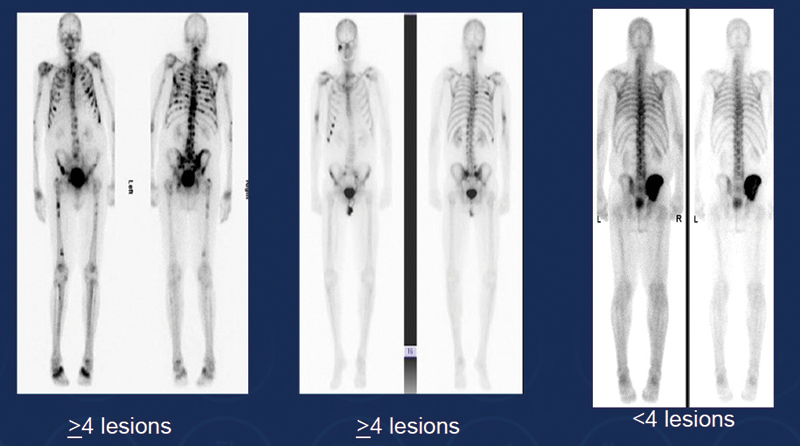"I'm not sure what extensive disease really is, but in some patients, when you see it, you really recognize it. In other patients, it’s not 100% clear,” Dr. Yu commented (Fig. 1). Some patients with multiple medium or large lesions in bone would clearly meet the definition used in the CHAARTED trial (left). Others with widespread but tiny lesions would fulfill the criteria as well (middle). However, a patient whose entire hemipelvis is involved by tumor but who has no other bony metastases would be classified as having low-volume disease (right). “So I think there is controversy and potential problems with this classification of low-volume vs high-volume disease,” Dr. Yu maintained. ■


